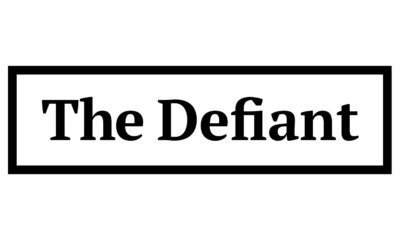Fintech
Banking-as-a-Service middleware is going “straightforward.” What does it mean?

The middleware banking-as-a-service, or BaaS, space is all straight forward.
The definition of “direct” is still confusing. Some players in this space – in general, providers that connect banks to fintechs and provide matchmaking services and technologies – let’s say that tripartite agreements between a bank, a non-bank provider and a middleware provider are still straightforward when the bank has oversight of its BaaS customer. Other vendors say this means selling software to banks that will boost their BaaS capabilities, but leaves fintech involvements entirely in the bank’s hands.
Regardless, the role of financial institutions in this space is widely recognized require more supervision of their partners.
“Direct or indirect is not the issue,” said Jonah Crane, partner at Klaros Group, who notes that most middleware companies have largely facilitated direct relationships between banks and fintechs over the past couple of years. “The real question is: who is doing what?”
Regulators are worried about how little banks understand theirs fintech partners and the confusing arrangements are over which party is responsible for which aspects of risk and compliance.
“The easiest way to manage risk is to get closer to it,” Crane said.
Suppliers including Synctera, Treasury Prime and Unit have adapted in recent months and have increasingly shied away from such tripartite contracts. But the question of how middleware vendors can survive in a space where banks are more reluctant to offload some degree of oversight looms larger after one of the early players in this space, Synapse, filed for bankruptcy. Instant payments company TabaPay then pulled out of the deal to acquire Synapse’s assets. (Synapse founder Sankaet Pathak did not immediately respond to a request for comment.)
However, industry observers find it Synapses era uniquely problematic.
The BaaS middleware model is not broken, said Kirsten Muetzel, who advises banks on financial risk management and compliance as founder and director of KLM Advisory and was previously chief risk officer at Synctera, where she still holds stock option.
“The problem is that regulators have found that some banks have completely abdicated responsibility for overseeing these middleware vendors and partners,” he said. For community banks, which tend to lack large, sophisticated risk management staffs, the BaaS provider “[is] augmenting, not replacing.”
The economics of business are also changing. If they maintain their efforts in this area, banks may face increased compliance costs.
“Middleware vendors will need to focus on the core value they provide, which is the transfer of data and information,” said Jason Henrichs, founder and CEO of community banking consortium Alloy Labs Alliance. “It is not possible to charge costs for services that the bank will have to duplicate anyway.”
What does it mean to go direct
Itai Damti, co-founder and CEO of Unit, founded four years ago, sees three elements in Unit’s role in the bank-fintech relationship.
One is technology services, where non-bank customers will use Unit’s application programming interfaces to download customer statements or apply for a debit card. Another is managed services, such as producing and filing 1099-INT tax forms on behalf of the fintech client. The third is the exchange of communications between banks and fintechs in a standardized way. For example, if the fintech wants to increase ACH limits for a specific customer, Unit will explain the reasoning to the bank, obtain approval, and pass this approval to the fintech using its template.
The third piece is changing so that banks and fintechs can communicate without as much participation from Unit. Banks can apply any template for launching or modifying the program instead of using the Unit template. Unit is also introducing more features in its supervisory dashboard that allow banks and customers to communicate without contacting Unit so that, for example, a fintech can possibly request a limit change for its customer in the Unit dashboard and receive the approved by the bank, with a verifiable check. extra paper trail.
“We are increasingly breaking out of the communication loop and asking parties to speak without relying on us,” Damti said. As he has seen regulators increase their expectations of partner banks, “We don’t want to run the risk that Unit might forget to say something or ask a question. This direct exchange allows the bank to have full control and visibility over the line of reasoning customer,” he said.
Blue Ridge Bank, Choice Bank and Piermont Bank they are all former clients of the Unit.
Treasury Prime, founded six years ago, sees itself as a software provider that allows banks to put rules in place to manage relationships with fintech partners. Fintechs use its APIs to open bank accounts, issue cards, send ACH, wires, and more.
“When Jim [Brusstar] and founded Treasury Prime, we had the idea that we would focus on managing the operational, legal and contractual risks associated with the broader banking industry and would not explicitly handle any compliance ourselves,” said co-founder and CEO Chris Dean “Our first customers were the banks. Banks had their own fintech relationships.”
About four years ago, banks started asking Treasury Prime to also act as a sales arm, so the company struck some deals through tripartite agreements between the bank, the fintech and Treasury Prime. Towards the end of 2023, that business sector began to fade away as banks preferred to wind down their operations for compliance reasons. Treasury Prime eliminated this arm entirely in February, which led to the layoffs reported that month.
“We started to see the cost of the relationship increase dramatically as the regulatory environment tightened,” Dean said. “Regulators didn’t like this three-way deal at all.”
Synctera describes itself as a marketplace where banks and fintechs create relationships and a system of record when those relationships are formed. It provides APIs for accounts, payments and loans, and tools to manage operations, compliance and data needs. Coastal Community Bank in Everett, Washington, was his first customer.
Historically the company has signed tripartite agreements with the bank, the fintech partner and itself. More recently, it has offered other contract models, including the ability for a bank to contract directly with a fintech and for fintechs to use the Synctera platform by seeking relationships outside of their banking network. In all versions, the bank retains direct oversight rights and compliance responsibility for fintech partners, Synctera says.
“Direct bank supervision, in its most abstract terms, means: Does the bank know what is happening to end consumers, and do they understand KYC and all their transaction obligations?” said Peter Hazlehurst, co-founder and CEO of Synctera. “Technology has positioned itself in the middle to make this possible.”
Some new entrants into the overall BaaS technology space structure “lead” differently.
Braid, launched in November 2022, licenses software to banks that want their fintech payment processing operations in-house rather than using a third-party processor or BaaS middleware platform. Portage Bank in Bellevue, Washington, has partnered with Braid, while another bank and a credit union have signed contracts.
Randy San Nicolas, co-founder and CEO of Braid, describes it as a parallel core, where the retail business remains in the existing core system. “This is an on-premise installation. The banks will install it in a cloud environment that they control,” he said. “The most important thing is that they can kick us out. We are a seller of the bank and not of a third party.”
For him this is the key to “going direct”.
“Everyone says ‘we will give control to the banks,’” San Nicolas said. “We define control as giving the bank full ownership of the software and all the technology surrounding it.”
Infinant provides embedded financial technology to banks in a cloud-native software-as-a-service model that overlays their core systems, including capabilities to open accounts, issue cards and move money. Banks can use existing fraud monitoring, customer insights and anti-money laundering software or Infinant’s vendors. It has been on the market for more than a year and has five banks as clients.
“Fintechs have a direct relationship with the bank and we do not take part in that relationship,” said Riaz Syed, founder and CEO of Infinant. “There is no tripartite agreement.”
Their entry into the market suggests there is unmet demand, Crane notes.
“They position themselves by telling banks we’re not trying to disintermediate you, we’re a technology layer for you,” he said.
The next direction middleware will head
In recent years the Unit has moved toward larger deals, such as public or more mature companies with “significant distribution,” Damti said.
“Banks don’t want to serve smaller companies these days,” he said.
Hazlehurst says Synctera has added banking partners in just the last year and a half and regularly signs two to three new fintech clients every month.
“The market is fundamentally supply-constrained,” he said. “There are not enough banks ready to take on fintech programs and launch them.”
Like Unit, Synctera is raising the bar for which fintech clients it will accept as banks tighten their risk appetite. Most of the non-bank companies it signs tend to be at Series C or higher, or are public companies. In the past, Synctera has most commonly signed startups in the seed or pre-seed stage.
Even as compliance costs for BaaS banks increase, “these partnerships are imperative for them to be integrated into the system. VCs funding fintechs will need to factor this into their estimates,” Crane said. “Some form of technology layer is going to be critical because community banks are not going to build that layer on their own.”
Some suppliers have cut staff to move forward in this new reality.
Treasury Prime has laid off employees after closing the part of its business that sought fintech partners for banks. Synctera laid off employees in March to streamline the business and give it more financial autonomy. Meanwhile, the company has strengthened its payment operations and compliance teams.
The unit did not carry out any layoffs. In the future, it plans to add loans beyond banking to the services it facilitates; perhaps monetize forms, such as 1099-INT filing, which charges no additional fees for today; and sell Unit as a lateral core system so banks can launch their own white-label digital experiences.
The layoffs at Treasury Prime and Synctera may be more of a temporary bump in the companies’ trajectories than a serious sign of trouble.
“It’s the recognition of the change between what you can charge and what your core business is,” Henrichs said. “It’s an acknowledgment that the model has changed.”
Fintech
Lloyds and Nationwide invest in Scottish fintech AI Aveni

Lloyds Banking Group and Nationwide have joined an £11m Series A funding round in Scottish artificial intelligence fintech Aveni.
The investment is led by Puma Private Equity with additional participation from Par Equity.
Aveni creates AI products specifically designed to streamline workflows in the financial services industry by analyzing documents and meetings across a range of operational functions, with a focus on financial advisory services and consumer compliance.
The cash injection will help fund the development of a new product, FinLLM, a large-scale language model created specifically for the financial sector in partnership with Lloyds and Nationwide.
Joseph Twigg, CEO of Aveni, explains: “The financial services industry doesn’t need AI models that can quote Shakespeare, it needs AI models that offer transparency, trust and, most importantly, fairness. The way to achieve this is to develop small, highly tuned language models, trained on financial services data, vetted by financial services experts for specific financial services use cases.
“FinLLM’s goal is to set a new standard for the controlled, responsible and ethical adoption of generative AI, outperforming all other generic models in our selected financial services use cases.”
Robin Scher, head of fintech investment at Lloyds Banking Group, says the development programme offers a “massive opportunity” for the financial services industry by streamlining operations and improving customer experience.
“We look forward to supporting Aveni’s growth as we invest in their vision of developing FinLLM together with partners. Our collaboration aims to establish Aveni as a forerunner in AI adoption in the industry, while maintaining a focus on responsible use and customer centricity,” he said.
Fintech
Fairexpay: Risk consultancy White Matter Advisory acquires 90% stake in fintech Fairexpay

Treasury Risk Consulting Firm White Matter Alert On Monday he announced the acquisition of a 90% stake in the fintech startup Fair payment for an undisclosed amount. The acquisition will help White Matter Advisory expand its portfolio in the area of cross-border remittance and fundraising services, a statement said. White Matter Advisory, which operates under the name SaveDesk (White Matter Advisory India Pvt Ltd), is engaged in the treasury risk advisory business. It oversees funds under management (FUM) totaling $8 billion, offering advisory services to a wide range of clients.
Improve your technology skills with high-value skills courses
| IIT Delhi | Data Science and Machine Learning Certificate Program | Visit |
| Indian School of Economics | ISB Product Management | Visit |
| MIT xPRO | MIT Technology Leadership and Innovation | Visit |
White Matter Advisory, based in Bangalore, helps companies navigate the complexities of treasury and risk management.
Fairexpay, authorised by the Reserve Bank of India (RBI) under Cohort 2 of the Liberalised Remittance Scheme (LRS) Regulatory Sandbox, boasts features such as best-in-class exchange rates, 24-hour processing times and full security compliance.
“With this acquisition, White Matter Advisory will leverage Fairexpay’s advanced technology platform and regulatory approvals to enhance its services to its clients,” the release reads.
The integration of Fairexpay’s capabilities should provide White Matter Advisory with a competitive advantage in the cross-border remittance and fundraising market, he added.
The release also states that by integrating Fairexpay’s advanced technology, White Matter Advisory aims to offer seamless and convenient cross-border payment solutions, providing customers with secure options for international money transfers.
Fintech
Rakuten Delays FinTech Business Reorganization to 2025

Rakuten (Japan:4755) has released an update.
Rakuten Group, Inc. and Rakuten Bank, Ltd. announced a delay in the reorganization of Rakuten’s FinTech Business, moving the target date from October 2024 to January 2025. The delay is to allow for a more comprehensive review, taking into account regulatory, shareholder interests and the group’s optimal structure for growth. There are no anticipated changes to Rakuten Bank’s reorganization objectives, structure or listing status outside of the revised timeline.
For more insights on JP:4755 stock, check out TipRanks Stock Analysis Page.
Fintech
White Matter Advisory Acquires 90% Stake in Fintech Startup Fairexpay

You are reading Entrepreneur India, an international franchise of Entrepreneur Media.
White Matter Advisory, which operates under the name SaveDesk in India, has announced that it is acquiring a 90% stake in fintech startup Fairexpay for an undisclosed amount.
This strategic move aims to strengthen White Matter Advisory’s portfolio in cross-border remittance and fundraising services.
By integrating Fairexpay’s advanced technology, White Matter Advisory aims to offer seamless and convenient cross-border payment solutions, providing customers with secure options for international money transfers.
White Matter Advisory, known for its treasury risk advisory services, manages funds under management (FUM) totaling USD 8 billion.
Founded by Bhaskar Saravana, Saurabh Jain, Kranthi Reddy and Piuesh Daga, White Matter Advisory helps companies effectively manage the complexities of treasury and risk management.
The SaveDesk platform offering includes a SaaS-based FX market data platform with real-time feeds for over 100 currencies, bank cost optimization services, customized treasury risk management solutions, and compliance guidance for the Foreign Exchange Management Act (FEMA) and other trade regulations.
Fairexpay is a global aggregation platform offering competitive currency exchange rates from numerous exchange partners worldwide. Catering to both private and corporate customers, Fairexpay provides seamless money transfer solutions for education, travel and immigration, as well as simplifying cross-border payments via API and white-label solutions for businesses. Key features include competitive currency exchange rates, 24-hour processing times, extensive currency coverage of over 30 currencies in more than 200 countries, and secure, RBI-compliant transactions.
-

 DeFi11 months ago
DeFi11 months agoSwitchboard Revolutionizes DeFi with New Oracle Aggregator
-

 News12 months ago
News12 months agoLatest Business News Live Updates Today, July 11, 2024
-

 DeFi11 months ago
DeFi11 months agoIs Zypto Wallet a Reliable Choice for DeFi Users?
-

 DeFi1 year ago
DeFi1 year ago👀 Lido prepares its response to the recovery boom
-

 Fintech12 months ago
Fintech12 months agoFinTech LIVE New York: Mastercard and the Power of Partnership
-

 DeFi11 months ago
DeFi11 months agoEthena downplays danger of letting traders use USDe to back risky bets – DL News
-

 Fintech1 year ago
Fintech1 year ago121 Top Fintech Companies & Startups To Know In 2024
-

 Fintech1 year ago
Fintech1 year agoFintech unicorn Zeta launches credit as a UPI-linked service for banks
-

 ETFs1 year ago
ETFs1 year agoGold ETFs see first outing after March 2023 at ₹396 cr on profit booking
-

 News1 year ago
News1 year agoSalesforce Q1 2025 Earnings Report (CRM)
-

 DeFi1 year ago
DeFi1 year agoTON Network Surpasses $200M TVL, Boosted by Open League and DeFi Growth ⋆ ZyCrypto
-

 Videos1 year ago
Videos1 year ago“We will enter the ‘banana zone’ in 2 WEEKS! Cryptocurrency prices will quadruple!” – Raoul Pal

















